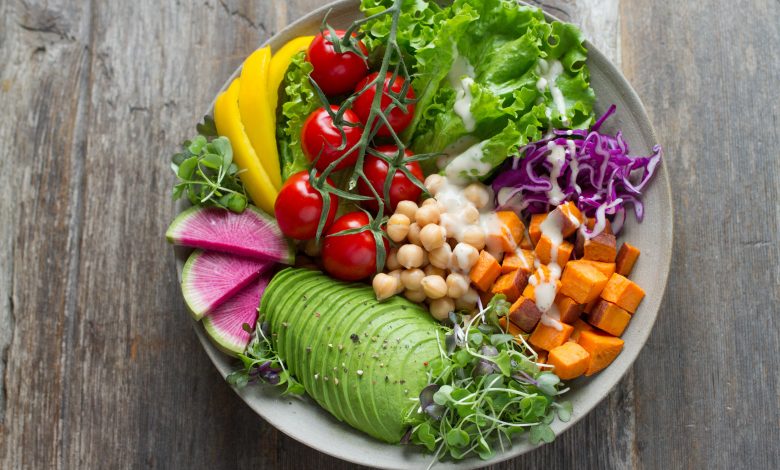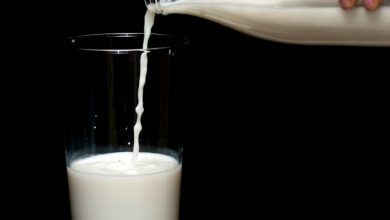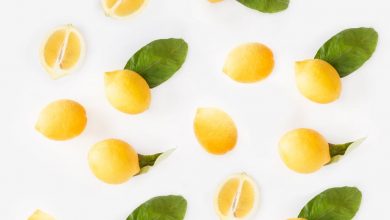
15 Salad Ideas to Liven Up Your Boring Salad
Healthy eating and calorie counting are what pushes weight-loss aspirants to search for satisfying low-calorie alternatives of their meals. One of the best weight-loss meals is salad. Salads are so iconic that, every time a fitness commercial comes on, the actors are most likely to be eating a plate of greens mixed with dressing.
Incorporating salads into your diet is an excellent idea if you’re looking for a way to trim your calorie count. However, some people may say that the dish is not for them, often describing it as bland, boring, and unsatisfying to eat. But we’re here to tell you that there is more to this meal than tossing together vegetables and oil.
Salads are the melting pot of different kinds of ingredients. They have many health benefits to our lifestyle, but just like any good thing, they also come with the bad stuff. Although they are delicious, there is such a thing as an “unhealthy salad.” In this article, we talk about how salads can be both good and bad for you. We also have 15 ideas to make your salad a more fun eating experience!
Why Salads May Not Be Healthy For You
We often think of salad as the archetype of all things nutritious. But yes, it is possible. Salads can be unhealthy. While the mixture itself isn’t bad for you, it’s the choice of ingredients that you put in your salad that makes it a not-so-healthy meal.
If you don’t think carefully about what you put into your salad bowls, the calories can quickly add up and turn the once fit meal into junk food.
For example, most salads are served with croutons sprinkled on top of it. But croutons are mostly bread fried and soaked in oil. They are an evil combination of carbs and the wrong types of fat. Even just four spoonfuls of croutons can give you around 200 calories alone.
Some people also tend to go overboard with the cheese. Another mistake that people make that transforms their salads into an unhealthy meal is that they make the meat the base of their salad. If you have more meat in your bowl than vegetables, then it’s not a salad but a steak with side veggies. People also use dense red meat as toppings for their salads, which, in tremendous amounts, contains more than the daily protein intake that we need. The best way to go is sliced ham.
Something similar happens to people who eat pasta salads. Now, there is nothing wrong with eating a pasta salad now and then. Still, if you eat more of the pasta than the actual vegetables, then it’s not a proper diet. The calories from pasta easily add up and can contribute enormously to your calorie count.
In some cases where the salad is healthy, it is often accompanied by a not-so-healthy side dish like bread. Side dishes like bread smothered in garlic butter and olive oil set back your progress when it comes to eating mindfully. The same concept applies when you indulge your salad with nuts and seeds that contain high fatty acid content.
One common rookie mistake is not knowing which salad dressing to pick. Choosing the wrong salad dressing can turn your healthy meal into an oily and calorie-filled feast. The best way to prevent this is to make the salad dressing or dress your portion and not the entire salad itself.
Why Salads Are Good For You
Looking at the bright side, eating salads has more benefits than it has disadvantages. As long you know what you are putting into your bowl, measure your proportions, and pick the right type of dressing, then you will have one healthy dish that you can enjoy every time.
Even just one salad, if done correctly, can give us the amount of energy that we need to burn throughout the day. There are also various health benefits that we can get from adopting the “salad lifestyle.”
For one thing, the healthy fats in salads help in absorbing vital nutrients that are needed by our bodies. These include lycopene, alpha-carotene, and beta-carotene. People who are fond of these dishes also have higher levels of vitamin C and E.
Best of all, the fiber that we get from vegetables and fruits help absorb the fat cells in our bodies and encourage weight loss. This is why so many people turn to the salad diet if they are trying to shed a few pounds.
15 Fun Ideas for Your Salads
The problem with eating salad at almost every meal is that it tends to get boring once you see the same bowl of ingredients every day. This can completely turn off a person who wants to lose weight. If you don’t know how to season your salad or mix it up properly, it’s easy to get discouraged. However, there are ways to liven up the ingredients that you put in your bowl.

Find inspiration anywhere.
Your salad doesn’t need to be restricted to the four walls of your home. If you feel inspired by other countries’ cuisines, you can incorporate it into your salad recipe. You can buy cookbooks or study the culture of other nations by watching videos or by traveling there yourself.
If you love Mexican food, you can mix fresh salsa into your leafy greens instead of the regular dressing. Indians are known for their love of spices, so why not add a few of their great flavors into your bowl? The world is your oyster!
Fruits are never a bad idea.
We completely understand that eating the same dull greens every day can kill the enthusiasm people have for salads. That’s why the first idea that you can do to elevate your salad to the next level is to add fruits. Fruits are never a bad idea and will give you the extra zing that you’re looking for in your salad.
Fruits have natural sugar that beautifully contrasts the sour flavor of most salad dressings. They also have additional vitamins that can add to the nutritional value of the meal. Fruits like apples, mangoes, and grapes can be an added treat to your once dull bowl of greens. Dried fruits can also work!
Have you tried salad in a jar?
You can now ditch your salad bowl and start collecting jars. A new trend is rising, and we love it! Instead of eating your greens the conventional way, fitness enthusiasts have started storing their salads in mason jars and keeping it overnight. Not only does this allow the vegetables to be soaked entirely by the dressing, but it also serves a practical purpose.
Salad jars are easily portable, so you can store one in your bag and take it with you to work. You can now quickly eat your lunch over your office desk while getting work done. To get the best taste, we recommend dressing your salad before putting it into the jar or coating the jar first with dressing.
Oats are your friend.
Oats in a salad? What a better way to liven up your salad by adding something beyond the conventional, right? You can pair your leafy greens with a dash of uncooked instant oats and let it soak overnight for that soft yummy goodness.
If you’re hesitant to step into this new taste, you can try grinding up the oats and sprinkling it over the salad as a replacement for breadcrumbs. Oats are an excellent source of fiber that can help in weight loss.
Cream it up!
Having a snack now and then won’t hurt your weight-loss journey as long as you stay within your calorie count. Using cream shouldn’t be frowned upon when it comes to preparing a salad, just don’t overdo it. Cream adds a soft and mushy texture that is appealing to the palate.
There are also many healthy ingredients that you can add to give your salad a creamy taste and texture. You can use avocados, non-fat cream, and plain yogurt. Using cream also makes the mixture heavier and helps you feel fuller faster, so it’s better to set out portions.
Use the blender.
Some people can’t handle the crunchy texture of salads, and that’s okay. There are other ways to enjoy this dish, and one way is to use your blender and mix it all up. This is a fantastic way of getting all the minerals and nutrients that you need from the typical salad without eating it the conventional way. You can refer to it as a “salad soup.”
To make salad soup, just throw into the blender the ingredients that you want to put into your salad. To make the “soup” part, you can add a liquid element of your choice or some natural fat. This can include avocados, nuts, or coconut milk.
Create your salad dressing.
Who says you have to stay in the same salad dressing aisle? The best salads are those that go beyond their regular dressings. If you like the comfort of familiarity, there is no shame in sticking with the balsamic vinegar and olive oil combination. But if you’re feeling adventurous, try creating a new salad dressing all on your own!
You can try experimenting with different sauces, spices, and nut kinds of butter, including almond and peanut butter. Don’t be afraid to add seeds into your mixture of vinegar and chili. Find out what suits your tongue and fills your belly.

Don’t forget to marinate your meat.
Just because it’s a salad doesn’t mean you can’t add meat. Some of the best salad recipes out there call for a few slices of beef, chicken, and even fish. Meat lovers who are transitioning into a healthy lifestyle can quickly adapt this strategy into their eating routines.
Adding a source of protein also helps you feel fuller for longer. You won’t have to worry about the calories from the meat because the vegetables will even it out. Also, don’t forget to marinate your meat and cook it before slicing it up and adding it to your salad for an even more delicious meal.
Why not roast your vegetables?
When people think of salad, they usually picture a bowl of fresh and raw ingredients mixed in and ready for eating. However, we’re here to tell you that being raw is not a requirement when it comes to salads. Sure the leafy greens such as lettuce don’t need to be boiled, but this rule doesn’t apply to all ingredients.
Other vegetables that you want to add to your salad like zucchini, onions, or pumpkins can be roasted before adding them to the bowl. Roasting it brings out the juices and makes it extra delicious. It also helps fill your stomach quickly and gives you the energy that you need for the day.
Go all out on herbs and spices.
The first mistake when making a salad is not seasoning it. Most people settle for boring and bland salads because it’s always been that way: don’t season it with anything else other than the dressing. But it shouldn’t be that way! Unseasoned meals kill the vibe entirely and leave the person with an unsatisfying meal.
One way to inject flavor into your salads is to use flavoring. Go all out when using herbs and spices and have fun mixing them up and trying new combinations. If you’re going for an Italian taste, opt for herbs such as rosemary, oregano, and thyme. Middle Eastern tastes go for cumin and sumac. If you’re looking for a quick punch to the throat, you can even use cayenne pepper or chili.
Chia seeds are a fun addition.
Seeds like chia seeds, sunflower seeds, and pumpkin seeds are a great way to include a healthy type of fat into your salads. They also level up the taste of the meal without adding too many calories. You can also include nuts such as pine nuts and almonds into the mix.
Make sure to only add one to two tablespoons of seeds and nuts into your salad. Even though they aren’t heavy when it comes to calorie count, the numbers can add up. Instead of having a healthy meal, you will end up with a fatty and oily mix of vegetables. Everything in moderation is the key to eating healthily.
Enhance the taste through pasta.
Pasta pairs wonderfully with salads and give it the extra filling that it lacks. It provides the meal with a beautiful visual, with the flavors being absorbed through the pasta and bursting deliciously into your mouth. Pasta salads are getting more attention nowadays, and we know precisely why. They look beautiful and taste divine.
If you’re going to add pasta into your salads, make sure to use whole wheat pasta. Avoid overly commercialized and heavily processed pasta products that you can find at any grocery store, as these are filled with lots of starch and sugars. If possible, you can also make your own pasta that you can mix with your leafy greens.
Quinoa is a must-add.
Aside from pasta, you can also add healthy carbs into your salad. Carbs like quinoa, brown rice, and barley are excellent choices that can act as nutritious fillers for your salads. They provide nourishment and energy that we need throughout the day compared to a basic salad that we buy as take-out.
Grains also taste delicious when paired with other herbs and spices. They give the palate a cleanser that enhances the taste of the other ingredients. But of course, similar to adding fats in salads, it’s also important not to go overboard with the carbs. If you’re eating more of the carbs and too little of the vegetables, it won’t be a healthy meal anymore.

A pop of color is always nice.
We tend to get discouraged about eating our salads when we look down at our bowls and all we can see are green leafy vegetables. It can feel monotonous and bland to eat “grass” every morning. To give it an extra vibe, why not add a pop of color into it?
Don’t be afraid to use a mixture of differently colored fruits, vegetables, and condiments. A few slices of red apples will look beautiful when placed next to purple lettuce. A pro tip would be to use the fruits and vegetables that are in season. It would be nice seeing an autumn salad with pumpkin and tomatoes on the plate.
Don’t be afraid of texture.
One of the reasons why some people are not fond of eating salads is because they fear the soggy texture that results from constant refrigeration. A genius way to hold the crunch is to add other layers of textures.
Adding varying textures enhances the flavor of the meal and helps maintain its crunchiness. You can add textures such as cooked vegetables, flaked nuts, seeds, or chopped up fruits. Another way to contain its delicious crunchy texture is to keep the salad in a sealed container and separate the dressing. You can make the salad in batches and only take out a portion each time to dress it.



